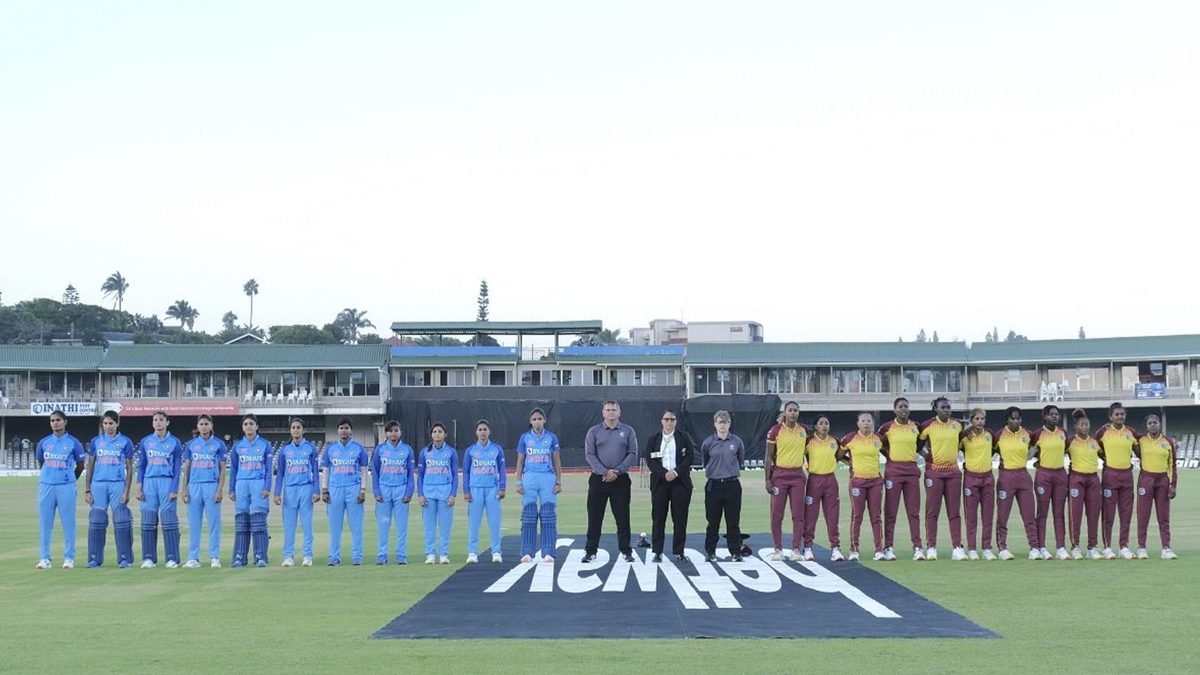
India and the West Indies are on the hunt for coaches for their women’s teams. The chosen ones have their task cut out.
India Women went to the ICC Women’s T20 World Cup 2023 earlier this year without a full-time head coach.
Depending on how you look at your glass, you’ll either raise it to them because they still made it to the semi-final despite the changes to their set-up just three months before the event, or look for answers at the bottom of said glass at how a top side missed out on the expertise and stability that could have carried them to a trophy, and seriously, is their planning really so non-existent?
Either way, and none too soon, the BCCI declared this week that they would soon invite applications from candidates for the positions of India senior women’s head coach and support staff.
“It is imperative that we have dedicated, full-fledged support staff to drive the team forward,” said Jay Shah, BCCI secretary, on social media. “Best coaches will be roped in to help our players realise their full potential and achieve excellence on and off the field.”
Fantastic. But, it is likely that the head that wears the crown will continue to lie uneasy.
Until 2017, the post of women’s coach was mostly held by retired players, overseeing their former colleagues and plagued by all the messy dynamics that brings. Since then, the BCCI has looked to former men’s Test players from the National Cricket Academy stable to support the team.
However, the post has been a merry-go-round for years. Players have seemed to have had an unnaturally large say in comings and goings. Poor performances such as at the 2022 ODI World Cup, late slip-ups such as at the Commonwealth Games final, and questionable team calls have had little explanation forthcoming.
Shah’s comments, though, suggest that a greater level of professionalism, accountability, scrutiny and ambition is set to accompany the role.
With the success of the maiden Women’s Premier League and the rising profiles of the players, the national coach will have more to do around personnel management. But, given how quickly the women’s game is evolving on the field, and how the Indian domestic system has not quite caught up, planning and skills development too will be crucial.
In addition, until now, the development of the women’s team has not been particularly guided by a long-term vision. Role clarity of individuals was not always clear. Anyone incoming will have to develop a whole culture, while also balancing the ones created by the WPL franchises.
And all this under increasing media glare. That’s a full plate, with little room for mistakes.
The West Indies board, meanwhile, announced this week that they had chosen not to extend the contracts of coach Courtney Walsh and his support staff. The decision, they said, followed “a review of the senior Women’s team performances and programme”.
Any review would surely have painted a worrying picture. Under Walsh, who took over in October 2020, the West Indies showed marked improvement in ODIs, where their improved individual and team batting and bowling averages and strike rates carried them to the semi-finals of the ICC Women’s Cricket World Cup 2022.
At the same time, they won just seven and lost 16 T20Is. The 2016 champions didn’t make it past the group stage in this year’s T20 World Cup. Their only wins came against Pakistan and Ireland – and that too only just.
More dramatically, under Walsh they lost their superstar to premature retirement. A year ago, players praised Walsh and his team for helping them “avoid bad habits”, building their confidence, and introducing new ways of approaching their game. Yet, Deandra Dottin, in her retirement statement in August, was damning about the team environment: “The current climate and team environment has been non-conducive to my ability to thrive and reignite my passion.”
But to expect a new backroom staff to fashion an immediate turnaround is ambitious. While a change in personnel might tempt Dottin to reconsider her retirement, many of the team’s challenges go deeper.
The West Indies are a team in transition. With a relatively small pool to pick from, they haven’t been able to identify the XI (or even 15) to help them consistently post the totals – or take the wickets to defend them – that top teams are aiming for these days. In Walsh’s time, in T20Is, they had the poorest runs per over among the 10 teams at the 2023 World Cup.
“In recent years, CWI has significantly increased investment into the women’s game at every level focusing on deepening the talent pool within the Caribbean and producing the next generation of West Indies Women’s players,” Cricket West Indies said in their statement.
This is true to an extent. A new academy open to women is expected to help nurture emerging talent, introduce them to high-performance training and fill in the gaps left by the programmes in the individual islands. A recent emerging players’ camp was also driven by this same vision, and some of the top under-19 players have made it to the senior team.
But as of now, the women from the Caribbean simply don’t play enough cricket. Since 2021, only Bangladesh have played fewer T20I matches than West Indies. And regional cricket only picked up last year after a long break during the pandemic years. The 6ixty (seven matches) and Women’s CPL (four matches) seem mostly exhibitional for now.
In Hayley Matthews and Stafanie Taylor, West Indies have generational greats who can win matches by themselves, but at a time of increasing investment among the top nations, Caribbean flair can only go so far and the team are getting left behind.
Both teams bring challenges aplenty to anyone who wants the top job. So who’s up for it?








